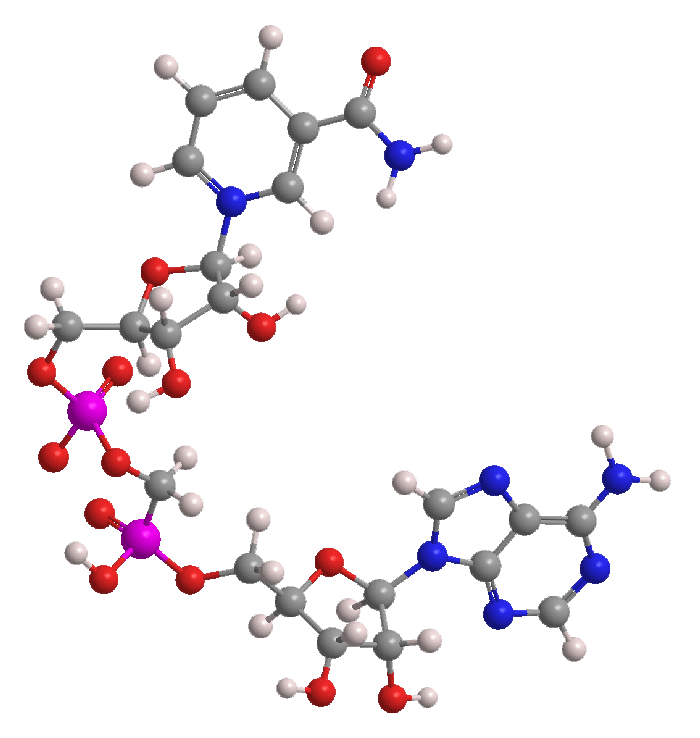What molecule am I?


Nicotinamide adenine dinucleotide (abbreviated NAD and sometimes called nadide) is a biomolecule present in all living cells. As its name implies, it consists of two nucleotides, one with an adenine base and the other with a nicotinamide base. The two are joined by their phosphate groups.
NAD exists in an oxidized form (NAD+) and a reduced form (NADH). The neutral form of NAD+ is shown in the images. This is the more common β-isomer; the α-isomer has the opposite stereochemistry at the nicotinamide linkage.
The biological activity of the coenzyme NAD was first observed by British biochemists Arthur Harden and William John Young in 1906 when they noticed that a yeast extract accelerated alcoholic fermentation.
In the 1930s, several German biochemists isolated NAD, for example from baker’s yeast (Paul Ohlmeyer) and from erythrocytes (Nobel laureate Otto Heinrich Warburg and Walter Christian). In 1950, British Nobel laureate Alexander J. Todd reported a laboratory synthesis of NAD.
The most important function of NAD+ is as an oxidizing agent in cellular metabolism. (The reduced form NADH, conversely, acts as a metabolic reducing agent.) NAD+ also has roles in adenosine diphosphate (ADP)–ribose transfer reactions that involve the poly(ADP–ribose) polymerase enzyme1 (PARP1) and several other enzymatic processes.
This year, David A. Sinclair of Harvard Medical School and a dozen colleagues at institutions worldwide reported an exciting new role for NAD+. They recognized that NAD+levels in animals (in this case laboratory mice) decline with age, which impairs the activity of PARP1 and leads to DNA degradation. They found that when NAD+ is orally administered to aging mice, PARP1 activity is restored and the mice are rejuvenated.
Sinclair believes that NAD+ could be given prophylactically to prevent or reduce diabetes, cancer, and other age-related conditions. Besides the obvious benefit to individuals, this discovery would ease the strain on the health care system by reducing the need for expensive medical treatment among the elderly.

Learn more about this molecule from CAS, the most authoritative and comprehensive source for chemical information.
Molecule of the Week needs your suggestions!
If your favorite molecule is not in our archive, please send us a message. The molecule can be notable for its current or historical importance or for any quirky reason. Thank you!
Stay Ahead of the Chemistry Curve
Learn how ACS can help you stay ahead in the world of chemistry.

